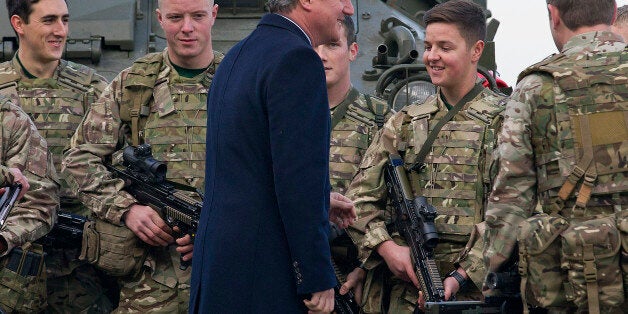
The cost of renewing the Trident nuclear weapons system has spiralled by £6 billion, the Government has revealed as David Cameron looked to exploit Labour's divide over the issue.
The Prime Minister today announced the Government's Strategic Defence and Security Review (SDSR) would include a £12 billion increase in military spending, including a 50,000-strong deployable force and new warships and aircraft.
But it also emerged the nuclear deterrent will cost £31 billion over the course of the 20 year procurement programme - compared to a previous estimate of £25 billion, with the increase out down to the "vast scale and complexity" of the project. A further £10 billion "contingency" has been set aside.

The Trident weapons system - four submarines carrying nuclear weapons - will cost £31 billion to build, but running costs push the total over their lifetime much higher
Mr Cameron looked to make the most of Labour's civil war over whether to support renewal against Labour leader Jeremy Corbyn wanting to ditch the weapons, at odds with many of his Shadow Cabinet.
The Prime Minister said there would be a Commons vote at the "appropriate" time - signalling it would take place whenever Labour was at its most vulnerable.
The "main-gate" decision is expected next year, and when MPs would seems likely to take place whenever most advantageous to the Government - specifically when Labour backbenchers can be drawn out to criticise their leader.
“Obviously at the appropriate moment, we’ll want to have a vote in this House,” he told MPs, adding: “I’m very keen that we have a vote.”
Labour's Shadow Defence Secretary, Maria Eagle, has said recently the Tories would not need a vote as they already have a "mandate" from the General Election victory.
Labour ditched unilateral disarmament as party policy in the 1980s but a fresh review - controversially co-chaired by former London mayor Ken Livingstone - paves the way for its backing to be revived.
The review, a stark contrast to the deep cuts announced in 2010 when the last defence overhaul took place, was set against the recent terror attack in Paris, and Mr Cameron revealed 10,000 military personnel would provide cover on UK streets in the event of a serious attack.
Labour said questioned whether this would "represent a major change in policing practice" and suggested that the Government is "planning to ask the Army to fill holes in the police service caused by impending funding cuts".
A full Government departmental spending review will be unveiled on Wednesday.
WHAT ELSE IS IN THE DEFENCE REVIEW?
The SDSR set out heavily-trailed plans for two new Army 5,000-strong "strike brigades" capable of deploying rapidly around the world as well as an additional £12 billion of equipment funding.
However the MoD's civilian workforce will be reduced by almost 30% to 41,000 over the next five years.
There will also be a new "pay model" for armed forces personnel - with an offer to new recruits that is intended to better meet their expectations and "targets resources on the people we need the most".
In other measures, the MoD will acquire nine Boeing P8 maritime patrol aircraft to plug the gap left by the highly-criticised decision in the last review in 2010 to scrap a new generation of Nimrod aircraft.
There will be a 10-year extension to the operational lifespan of the RAF's Typhoon jets and upgrade work to give them ground attack capabilities - effectively adding two additional frontline squadrons.
The Typhoons will now see service through to 2040 to answer RAF fears over the dwindling size of its resources - with the extended lifespan meaning there will be seven squadrons of around 12 aircraft.
As well as being enhanced to add ground attack capability to their aerial combat role, they will be fitted with upgraded stealth radar equipment.
The acquisition of the new F35 Joint Strike Fighter for the Royal Navy's two new aircraft carriers will be accelerated - with 24 aircraft to available by 2023 rather than the previously planned eight.
The SAS and other special forces will get an extra £2 billion to improve their equipment, the RAF will double its number of drones, an extra £1.9 billion will be spent on cyber security and 1,900 new personnel recruited to the intelligence agencies.